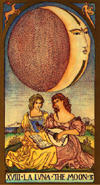guide to geocities and html

Html Guide
- Realise that border backgrounds are not for beginners. To make them display properly in all browsers you have to use tables, and I personally use the <pre> command as well. (Feel free to View the source of this page and use the code.) The popular <ul> tags look different in different browsers - the left hand column is thinner in IE and text tends to run over the border.
- Make sure you use a background that text is readable on. I thought this was fairly obvious but many people seem to miss it... if we can't read the text there isn't much point in being at the page.
- If you really must have embedded midis and wavs in your webpage, provide a way to turn them off. Sometimes I prefer listening to my choice of music.
- If you use frames, check them in more than one browser and screen resolution (if possible). Some frames when viwed in a lower resolution lose their bottom section, because the frame was fixed size. I know it's fiddly, but if you're using frames in the first place you should know it's not that simple.
- Please leave off the table borders and <hr> lines every so often. A bit of clear space breaks up the page, and the grey lines aren't that attractive.
- I think pages made with a text editor such as Notepad look much better than pages made with any editor such as Frontpage. Because you're working directly with the code it's much easier to work the pages you way you want them, and it makes it simpler to correct problems if you know what you're doing :)
- Use height and width tags with images. This allows the browser to load the whole page before the images basically, and so it speeds up loading. You can also use the <alt> command; this gives your images a text label. You see before the image loads, inside the border of the picture. Code example: <img src="medieval.gif" width="200" height="250" alt="medieval">
- As a general rule, keep the pages short. It gets tedious scrolling down metres of pages, and waiting for it all to load.
- Have fun :)
Geocities Guide
- Pagecount banners are not allowed in Geocities. Yes, I know this comes as a shock to many of you. Read the Banner FAQ for more information on which banners are ok in Geocities, and you can get a much nicer-looking counter from Geocities.
- Have a link back to Geocities on every page. It only needs to be a small text link, and it is required by the Content Guidelines.
- Make sure that your filenames and your html code match, as Geocities is case-sensitive when it comes to html and filenames. The easiest way to keep everything together in use lower case for names of files in all the html code. If you upload your pages to Geocities using the EZ File Upload Utility, you can simply check an option to automatically change filenames to lower case.(This is one solution for many lost background images.)
- If the File Manager isn't working, or for some reason you can't get to your home page, check the Geocities System Status page. It may be more than just your site.
- Get to know your local community leaders. They are ready and willing to help with questions or problems with Geocities, and if you're in Wellesley, the Community Centre is here.
Home | Webrings | Links
Geocities and Html Guide | Links to Sites about Medieval Women
Sign Guestbook | View Guestbook